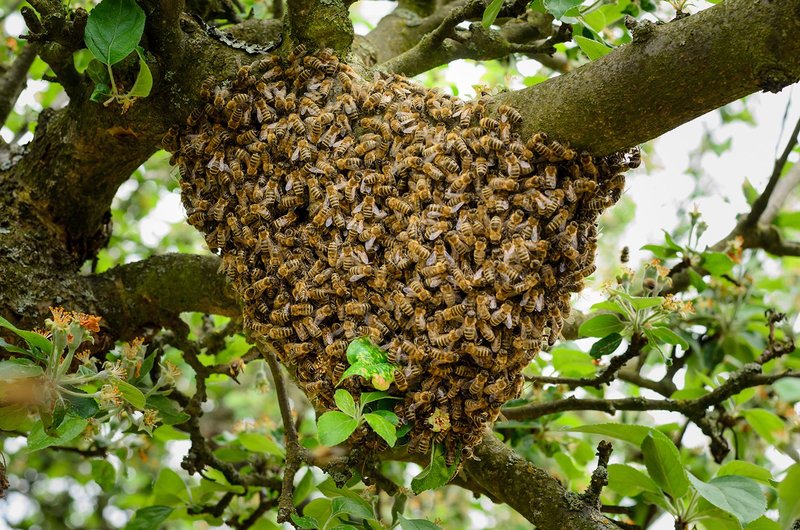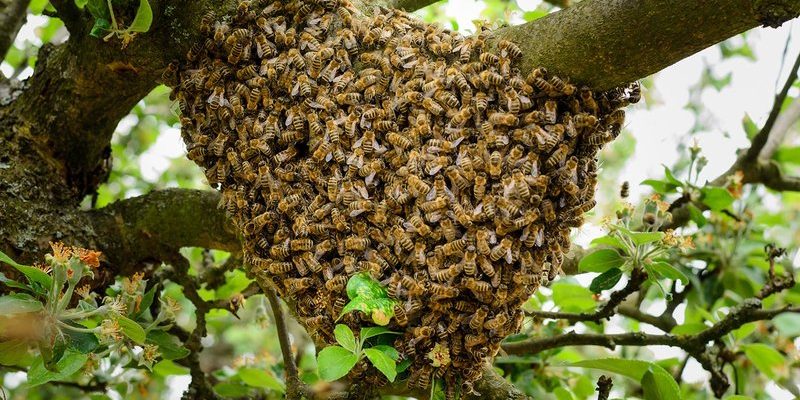
Bees can be found in a variety of habitats—from lush gardens to dense forests. They’ve got a knack for making the most of where they are, and their homes are often just as varied as the species themselves. Let’s dive into the world of bees and explore where they live and how they adapt to different environments.
Types of Bee Habitats
Bees are incredibly versatile when it comes to their habitats. You can find them in urban areas, in the wild, and even in deserts! Each location offers its own set of challenges, and bees have adapted in remarkable ways.
- Gardens and Backyards: This is probably the most familiar place to find bees. Flowers, fruits, and vegetables provide the nectar and pollen bees need. You might even see honeybees buzzing around your own garden!
- Forests: Bees thrive in wooded areas too. They often find wildflowers and plants that bloom at different times, ensuring they have food throughout the seasons.
- Deserts: Believe it or not, certain bee species have adapted to live in arid conditions. They become active during cooler parts of the day and feed on desert blooms.
Each of these habitats requires bees to be resourceful and clever in how they gather food and build their homes.
Bee Homes: Hives, Nests, and More
When we think about where bees live, many of us picture a beehive hanging from a tree. But there’s much more to it than that! Different bees have different types of homes that work best for their environments.
Honeybee Hives
Honeybees are social insects that live in large colonies. Their hives are incredible structures made of wax, built meticulously to house thousands of bees. Inside, you’ll find everything from brood (baby bees) to honey stores. These hives are often located in hollow trees or man-made beekeeping boxes.
What’s interesting is how these hives maintain temperature and humidity. Honeybees work together to keep their home just right, even in extreme weather. If it’s too cold, they cluster together to generate warmth. If it’s too hot, they fan their wings to create airflow.
Solitary Bee Nests
While honeybees are about teamwork, most bee species are solitary. For example, mason bees are known for their unique nests. They often lay eggs in small holes in wood or even in soil. These little nests can be as simple as a hollow stem filled with pollen and nectar for the larvae.
Solitary bees are experts at finding safe, snug spots to call home. You might be surprised to learn that they can create nests in the most unexpected places—like old plant stems or even in the cracks of your porch!
How Bees Adapt to Their Environments
So how do these little creatures adapt to their surroundings? Honestly, bees use a mix of behavior and biological changes to thrive. Let me explain a bit further.
Dietary Adjustments
Bees are picky eaters, and they know what they need to survive. Depending on where they live, they’ll adjust their diet. For example, bees in urban settings may learn to forage from garden plants and wildflowers that grow in cracks in the pavement. In contrast, bees in the wild might rely on a variety of blooming plants that provide nectar and pollen throughout the seasons.
You might be wondering, why does this matter? Well, diverse diets help bees stay healthy and strong. It’s similar to how we benefit from eating different foods—variety leads to better nutrition.
Behavioral Changes
Bees are also smart about their foraging habits. They often change their activity times based on the climate and availability of food. For instance, bees in hotter areas might become more active during the cooler parts of the day.
Additionally, some bees have learned to recognize which flowers bloom at different times and adapt their foraging schedule to take advantage of these blooms. It’s as if they’ve synced their internal clocks to nature itself!
Threats to Bee Habitats
Even though bees are amazing at adapting, they face significant challenges. Habitat loss is one of the biggest threats. Urban development, agricultural practices, and climate change make it challenging for bees to find the food and shelter they need.
Pesticides and Pollution
The overuse of pesticides is another issue. These chemicals can harm bees directly, and pollution can impact the flowers they rely on. When their food sources diminish, it’s tough for bees to survive.
It’s crucial that we create bee-friendly spaces, like planting native flowers and reducing pesticide use in our gardens. Simple actions can make a big difference in supporting these essential pollinators.
How to Support Bees in Your Area
If you’re interested in helping bees thrive, there are plenty of simple steps you can take right in your backyard.
- Plant Native Flowers: Choose flowers that bloom at different times to provide food throughout the season.
- Avoid Pesticides: Use natural pest control methods to keep your garden healthy without harming bees.
- Create Bee Hotels: Set up nesting spots for solitary bees, like bee hotels made from wood and tubes.
These small actions can create a welcoming environment for bees and help them adapt and flourish in our increasingly urban world.
So there you have it! From bustling hives to solitary nests, bees are quite remarkable in how they live and adapt to their surroundings. They’re not just buzzing around aimlessly—they’re strategic little beings with a deep connection to their environments.
Whether in a garden, forest, or even a city, bees find ways to thrive, proving their resilience time and again. As we learn more about their lives, we can also become better stewards of the world around us. By taking simple steps to protect their habitats, we’re not just helping bees—we’re supporting the entire ecosystem. So, next time you see a bee, take a moment to appreciate all the hard work that goes into their buzzing lives!

